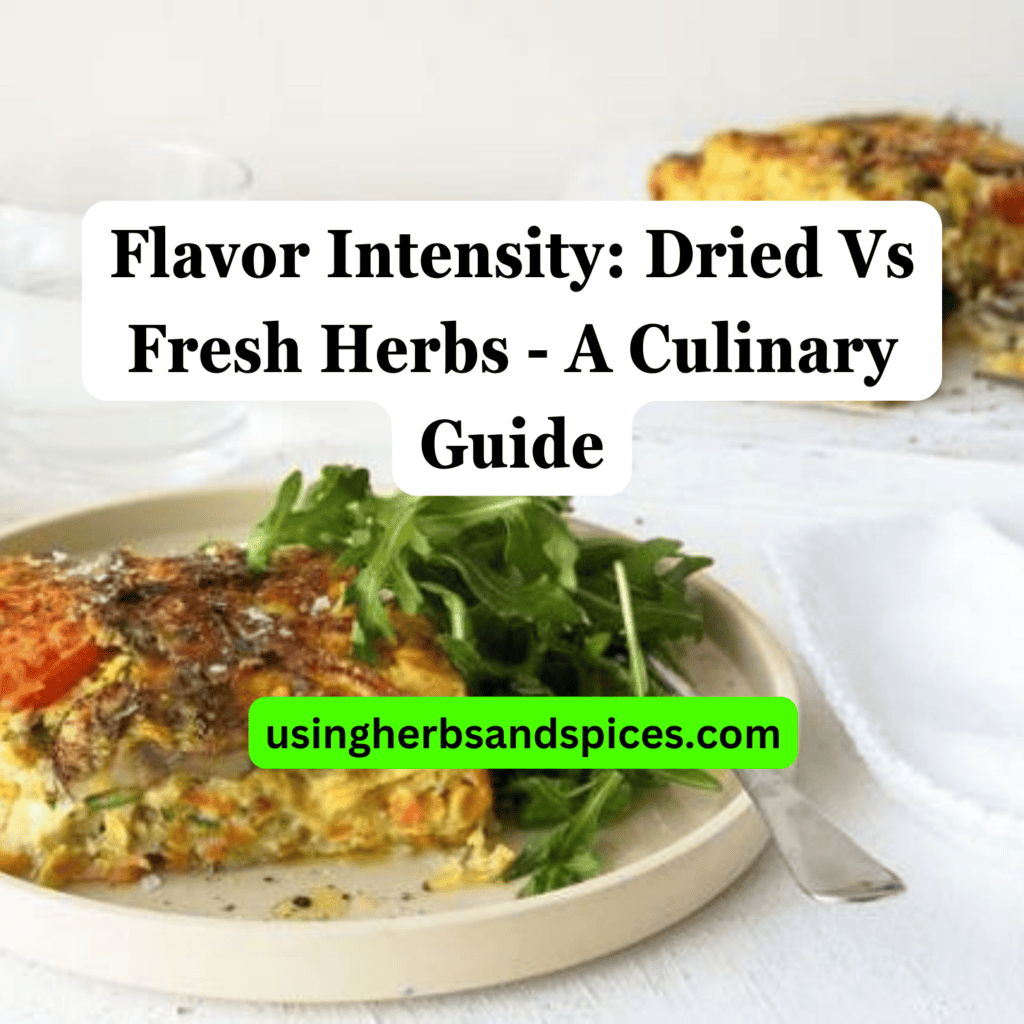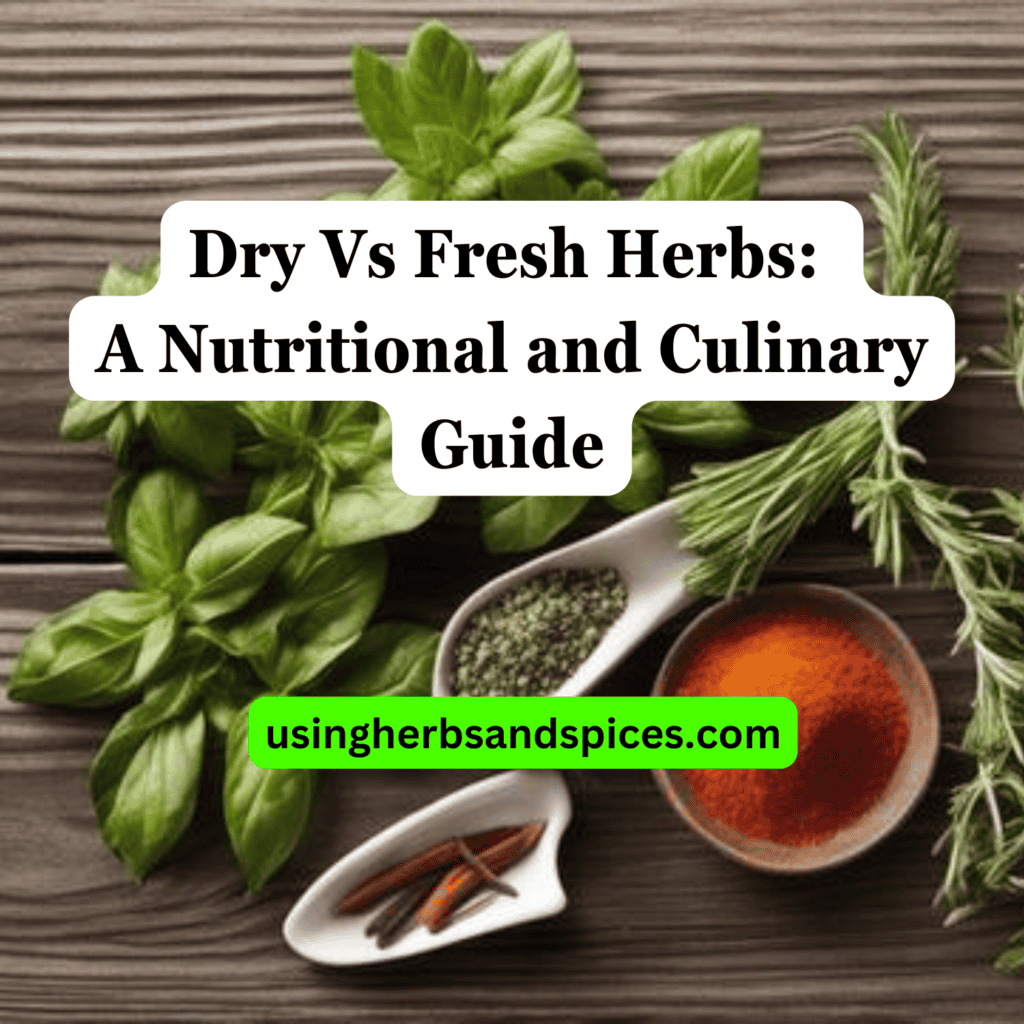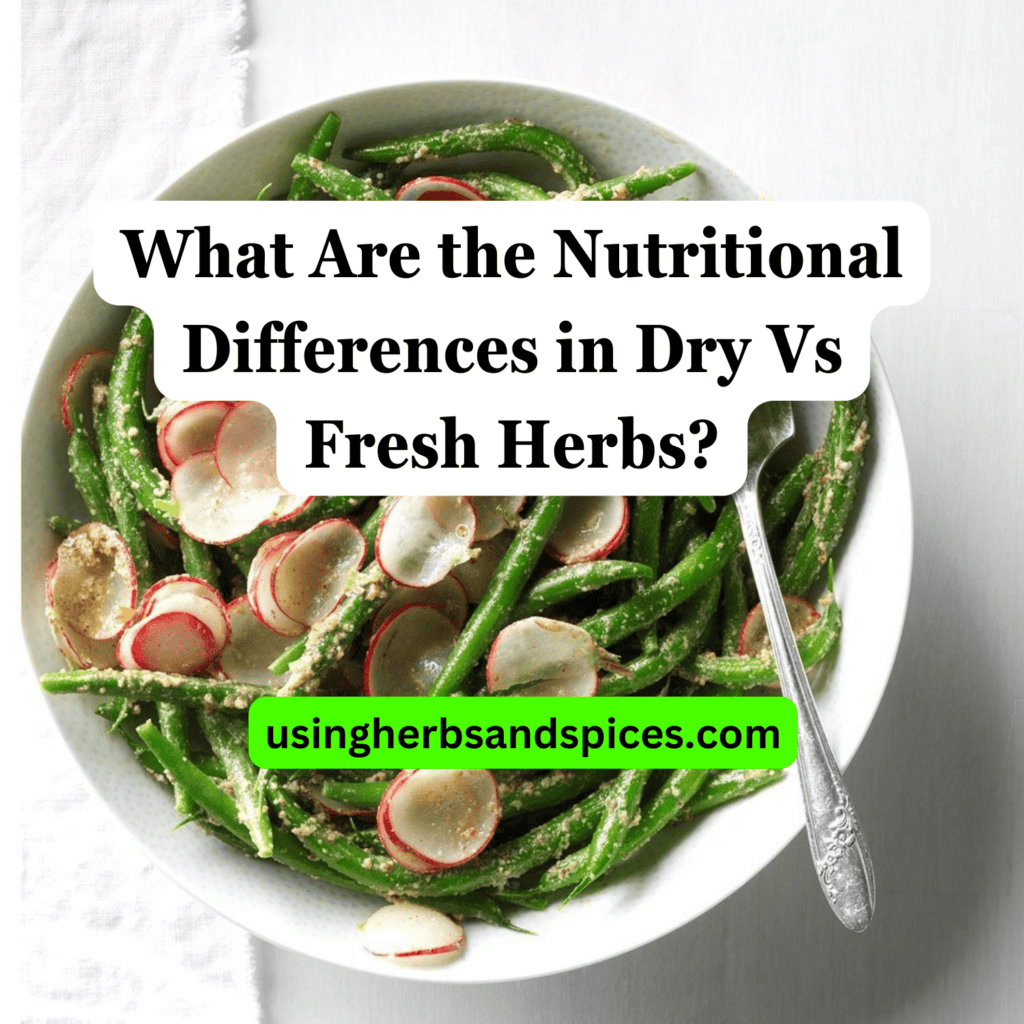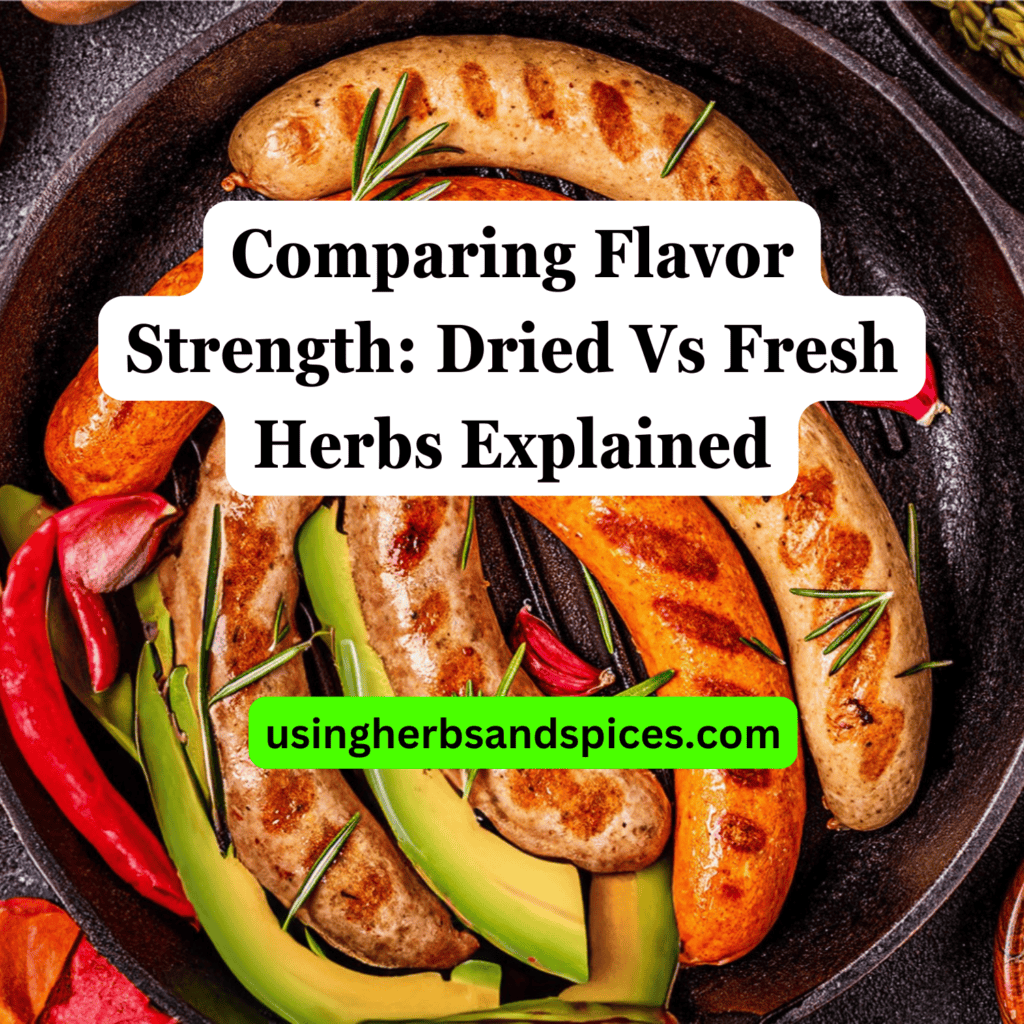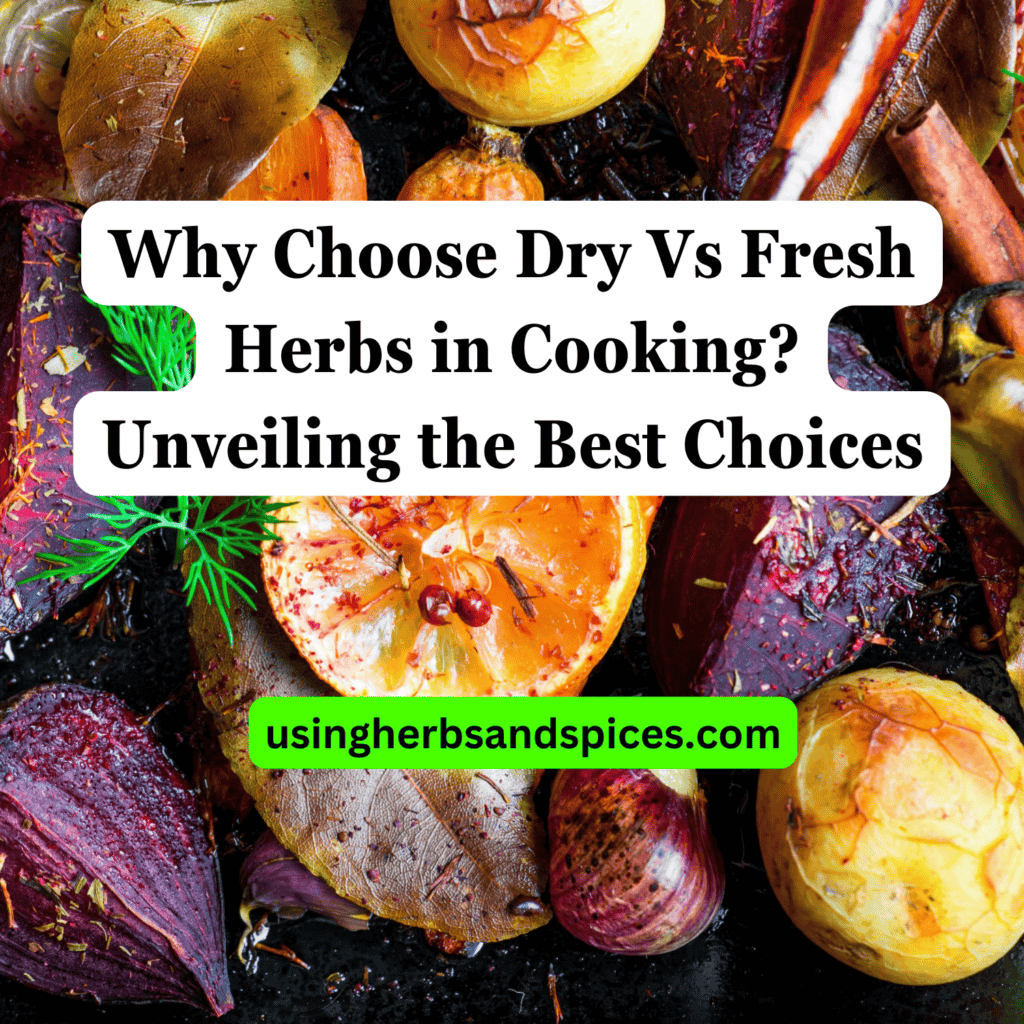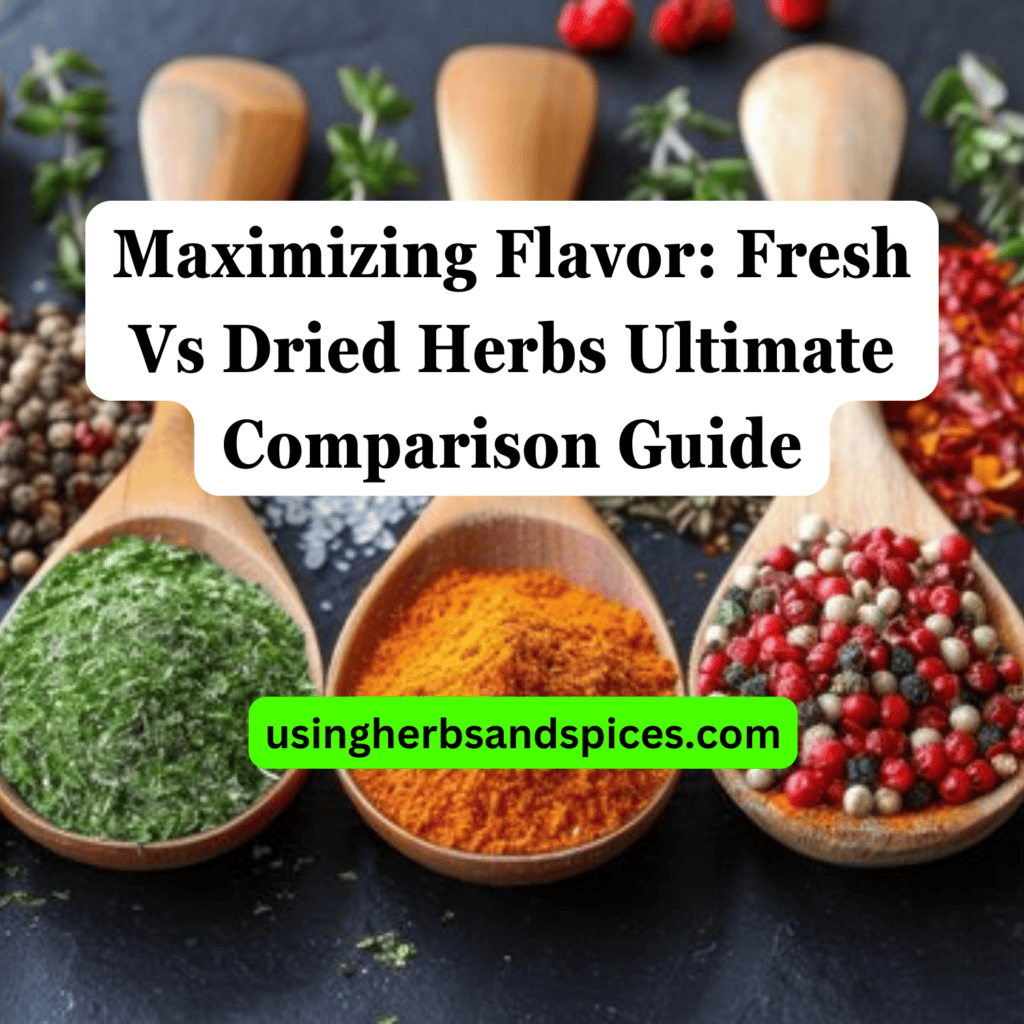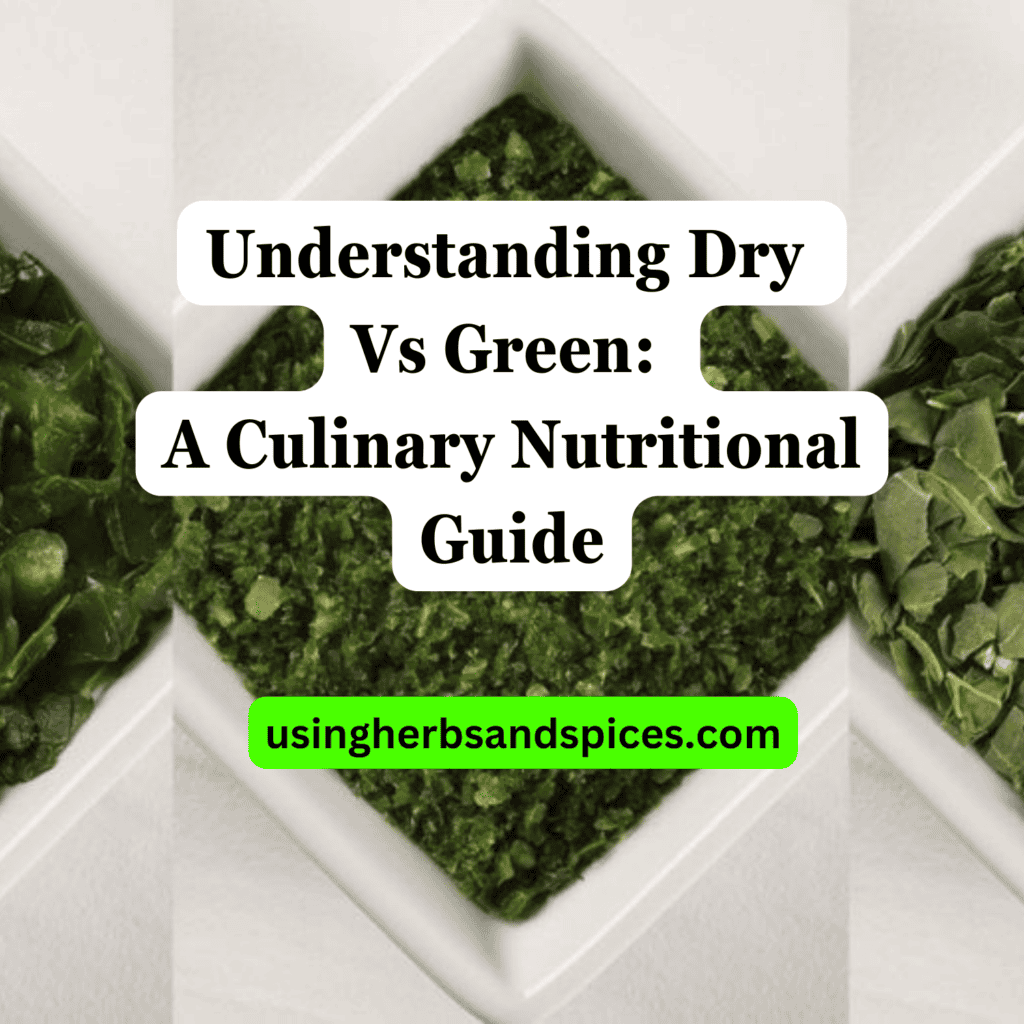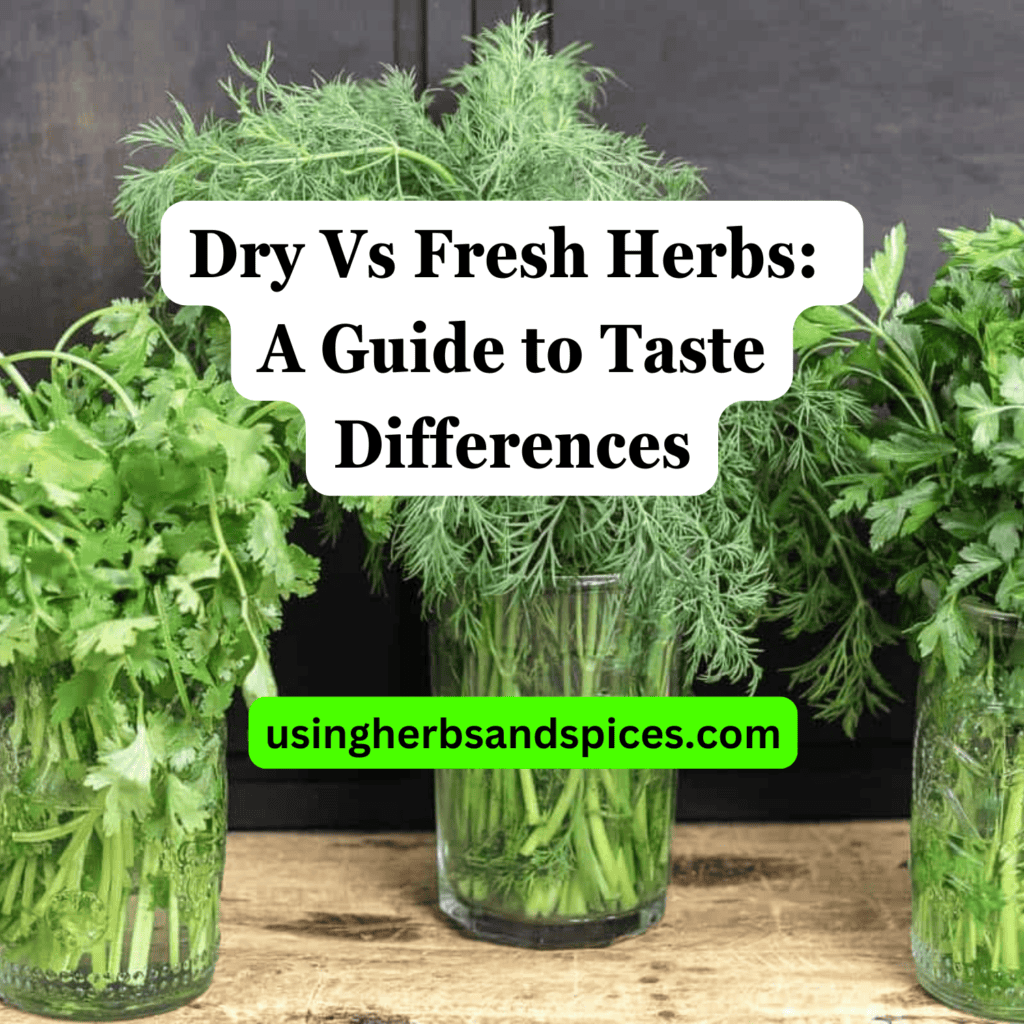SUMMARY: Fresh herbs add more vitamins but dried herbs pack a concentrated flavor and can be better when cooking takes longer. Both have their unique places in the kitchen, depending on the recipe’s needs.
Ever find yourself puzzled over whether to use dried or fresh herbs to elevate your culinary creations?
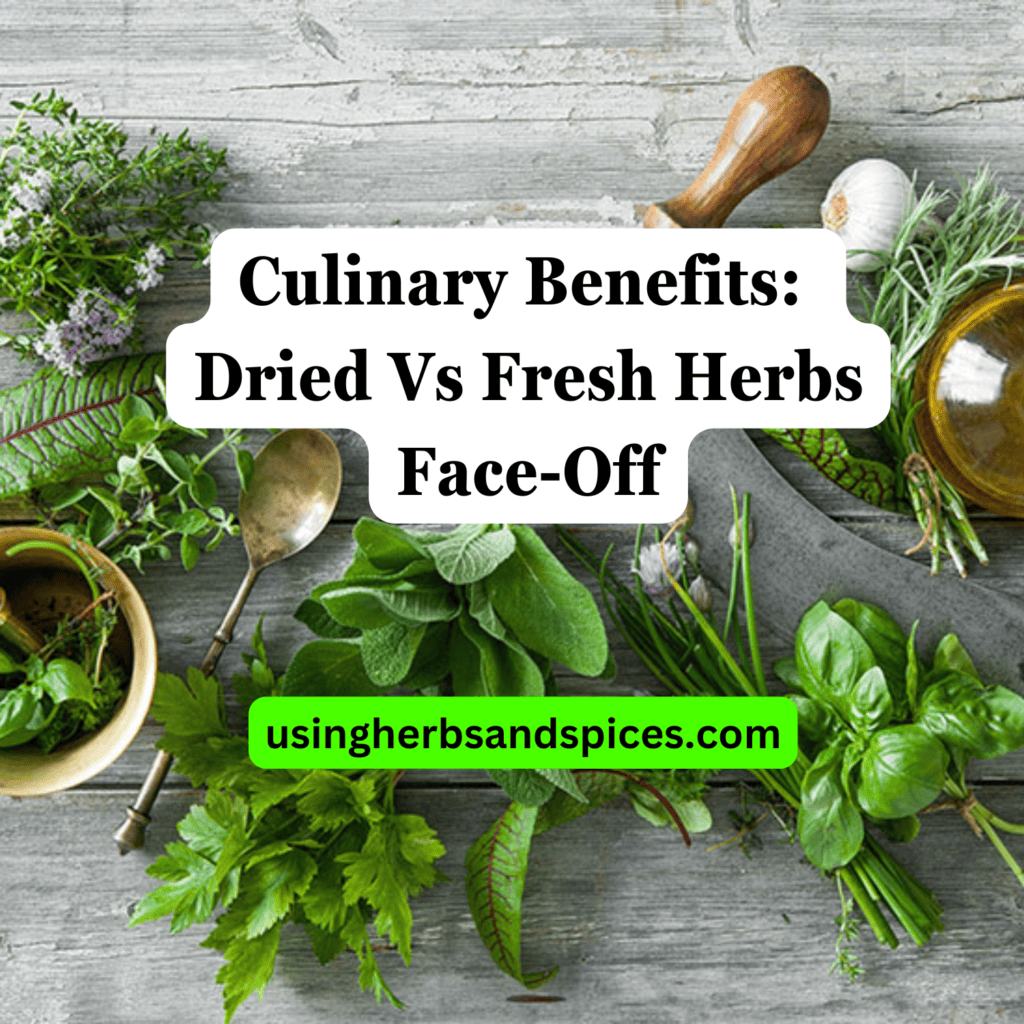
This guide is your beacon in the complex world of herbs, addressing all your concerns and curiosities.
- Nutritional Value of Fresh Herbs
- Nutritional Value of Dried Herbs
- Comparative Analysis of Dried Vs Fresh Herbs
- Practical Tips for Using Dried and Fresh Herbs
Dive in to discover the essence of using either dried or fresh herbs, and equip yourself with the knowledge to make every dish a masterpiece.
Nutritional Value of Fresh Herbs
Fresh herbs are not only revered for their vibrant aroma and flavor but also their impressive nutritional profile. Packed with vitamins, minerals, and antioxidants, fresh herbs like parsley, basil, and cilantro can offer a boost of nutrition with minimal calories. The high water content in fresh herbs contributes to their fresh taste and texture, making them an essential addition to a healthy diet.
Among their many benefits, fresh herbs are especially noted for their vitamin C, A, and K contents, essential for immune function, vision, and blood clotting, respectively. Moreover, the antioxidants present in these herbs, such as polyphenols, have been linked with reduced risks of certain chronic diseases, including heart disease and diabetes. By integrating fresh herbs into your meals, you’re not just enhancing flavor; you’re also incorporating a wealth of nutrients that support overall health.
It’s important to remember, however, that while fresh herbs are nutrient-dense, they are typically consumed in small quantities. This means that, although they can provide a concentrated source of certain vitamins and antioxidants, they should complement a diet rich in fruits, vegetables, and other nutrient-dense foods to meet your nutritional needs.
Nutritional Value of Dried Herbs
The drying process herbs undergo markedly influences their nutritional content. When herbs are dried, moisture is removed, leading to a concentration of certain nutrients. This means that, weight for weight, dried herbs can offer more intense flavors and a higher concentration of certain vitamins and minerals than their fresh counterparts. However, it’s important to note that some volatile oils, responsible for the aroma and flavor of herbs, are diminished during drying.
Drying herbs effectively reduces their water content significantly, which not only concentrates their flavor but also their caloric value and nutrients such as iron, calcium, and antioxidants. These preserved nutrients can contribute beneficially to one’s diet, especially when fresh herbs are out of season or unavailable. Nonetheless, the drying process can also lead to the degradation of heat-sensitive vitamins, such as vitamin C and B vitamins, hence why fresh herbs typically hold a higher value in those particular nutrients.
Understanding the nutritional dynamics of dried versus fresh herbs is essential for making informed choices in the kitchen. While dried herbs offer an intensified version of flavors and some concentrated nutrients, incorporating them wisely into your cooking can help achieve desired culinary outcomes without substantially compromising the nutritional value of your dishes.
Comparative Analysis of Dried Vs Fresh Herbs
When choosing between dried and fresh herbs, the decision often hinges on the specific culinary application and desired outcome in terms of flavor, aroma, and nutrition. Fresh herbs are celebrated for their vibrant color, fresh aroma, and subtle flavor nuances that can elevate a dish from good to extraordinary. They are particularly beneficial in recipes that do not undergo prolonged cooking times, such as salads, dressings, and garnishes, allowing their freshness to complement the overall dish.
On the other hand, dried herbs, owing to their concentrated flavor, are ideally suited for dishes that require cooking over long periods. The drying process diminishes their color and changes the texture, but it intensifies the essential oils and flavor. This makes dried herbs perfect for stews, soups, and sauces where their flavors have time to meld with other ingredients and develop complexity.
Furthermore, the nutritional aspect of using dried versus fresh herbs varies. Fresh herbs, when used immediately after picking, retain their vitamins and minerals, offering a burst of nutrition alongside their flavors. Dried herbs, while having a reduced vitamin content due to the drying process, still provide concentrated amounts of some minerals and phytonutrients, making them a worthwhile addition to the diet for both their culinary and health benefits.
The choice between using dried or fresh herbs can also depend on availability and convenience. Fresh herbs may not always be accessible year-round or can be more expensive than their dried counterparts. Dried herbs offer longevity and can be a practical choice for home cooks who wish to have a variety of herbs at their disposal without the worry of rapid spoilage.
Practical Tips for Using Dried and Fresh Herbs
Striking the right balance between dried and fresh herbs can transform your cooking, bringing dishes to life with vibrant flavors and aromas. To make the most out of these culinary treasures, consider the following tips:
- Substitution Ratios: When substituting dried herbs for fresh, a general guideline is to use one-third the amount of dried herbs as you would fresh. This is due to the concentrated flavors of dried herbs. For example, if a recipe calls for 1 tablespoon of fresh basil, you can substitute with 1 teaspoon of dried basil.
- Adding at the Right Time: Fresh herbs are often added towards the end of cooking to preserve their flavor and color, especially in dishes like salads and salsas. Dried herbs benefit from being added earlier in the cooking process, giving them time to hydrate and infuse their flavors into the dish.
- Storage: Fresh herbs can be stored in the refrigerator wrapped in a damp paper towel or with their stems in a glass of water, similar to a bouquet of flowers, to keep them vibrant. Dried herbs should be stored in a cool, dark place in airtight containers to preserve their flavor and extend their shelf life.
- Refreshing Dried Herbs: To maximize the flavor of dried herbs, it’s recommended to “wake them up” by rubbing them between your hands before adding them to your dish. This releases their natural oils and revitalizes their aroma and taste.
- Seasonally Fresher: Take advantage of the seasons by using fresh herbs from your garden, local farmers’ market, or grocery store when they are in season for the best price and quality. Off-season, dried herbs can be an excellent alternative, delivering robust flavors to your dishes.
By understanding and applying these simple tips, you can enhance the flavor, aroma, and nutritional value of your meals. Whether using dried or fresh, herbs are a powerful tool in the culinary arsenal that can dramatically transform your cooking.
Culinary and Nutritional Advantages
In summary, the comparison between dried and fresh herbs reveals unique culinary and nutritional advantages pertinent to each form, underlining the importance of their selective use in cooking.
- Fresh herbs offer a vibrant, bright flavor and higher levels of certain vitamins that are beneficial for health.
- Dried herbs, while less potent in fresh flavor, provide concentrated flavors and can be more convenient for longer cooking processes.
- The nutritional value of herbs can be affected by the drying process, with some nutrients becoming more concentrated, while others are diminished.
- Incorporating a mix of both dried and fresh herbs into your diet can maximize culinary versatility and nutritional benefits.
- Understanding the best scenarios to use dried versus fresh herbs can elevate your cooking and ensure you are making the most out of their nutritional and flavor profiles.
Culinary Benefits: Comparing Dried Vs Fresh Herbs FAQs
What are some common misconceptions about dried herbs?
One common misconception about dried herbs is that they are of inferior quality compared to fresh herbs and lack flavor. However, dried herbs can offer more concentrated flavors and are preferable in dishes that cook longer. Another misconception is that dried herbs lose all nutritional value, which is not the case; some nutrients do become more concentrated during the drying process.
How do I properly store fresh herbs to maintain their nutritional value?
To best preserve their nutritional value and freshness, fresh herbs should be stored in the refrigerator wrapped in a damp paper towel and placed inside a bag. Some fresh herbs, like basil, may be stored at room temperature in a cup of water. Proper storage can significantly extend their usable life and maintain their nutrient levels.
Can the process of drying herbs enhance certain flavors?
Yes, the process of drying herbs can indeed enhance certain flavors. As the water content is reduced, the flavors become more concentrated, making dried herbs especially beneficial in recipes that require cooking for longer periods, where fresh herbs’ flavors might not survive as well. This concentration can add a depth of flavor to soups, stews, and sauces.
Are there any herbs that are better used dried than fresh for culinary purposes?
Yes, some herbs are considered to be better when used dried because their flavors concentrate and meld into dishes more effectively. Oregano, thyme, sage, and bay leaves are classic examples where the dried form often provides a more suitable flavor profile for cooking, especially in dishes that require simmering for long periods.

